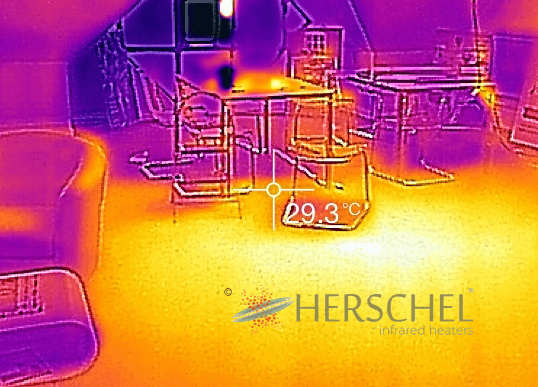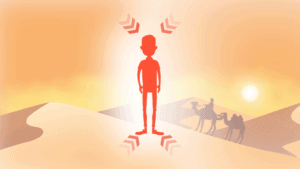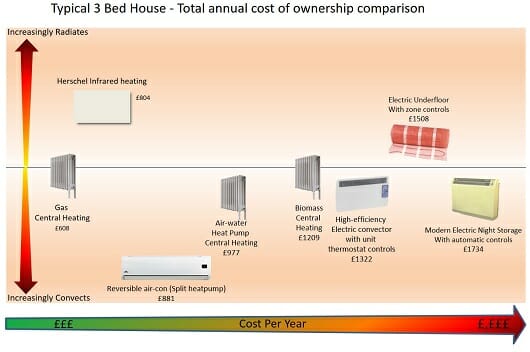
Effective heat transfer
How do infrared heaters work? Infrared heaters work by converting electricity into radiant heat. Infrared is part of the electromagnetic spectrum. The heat is the same feeling of warmth as the winter sun on your face and the heat from a coal fire. It is even the same form of heat emitted by your own body. It is the most basic form of heating known to man.
Infrared is the direct transfer of heat from the heater to the object (you and the room around you) without heating the air in between. It’s the same heat we feel from an environment warmed by the sun, and the wavelength most efficiently absorbed by the body. It is 100% safe and natural (it’s UV from the sun that is harmful, not infrared).
Today, new technology, in the form of our 100% energy efficient, Herschel Infrared heating, allows us to use infrared radiant heating in a stylish, comfortable and highly controllable way.
Heat we were designed for
Humans are radiant objects. More than 60% of our sense of comfort or discomfort is governed by our radiant heat gain or loss. Only 15% of our sense of comfort is governed by air temperature and movement.
This means we usually feel warm if we’re absorbing heat from our environment and often feel cold if we’re radiating out our own body heat to the outside world.
For most people, if the environment around us is more than 26C or less than 16C, we feel discomfort, because we are either gaining or losing too much body heat.
So, if we warm the walls, ceiling and floor of the room we are in (not the air) to at least 17c and ideally to around 22c, our bodies will stop perceiving that we are losing heat and we will feel warm and comfortable. This is the objective of infrared heating: to build up “thermal mass” in an environment and let it keep you warm.


Make your room a 360° radiator
Herschel infrared directly heats the walls, floor and ceiling of a building (the ‘thermal mass’). Once the thermal mass is warm, the building itself retains the heat for a period of time, so the heater only needs to be on to top up.
Most of other forms of heaters are convection heaters which primarily heat volumes of air, which then has to transfer its heat to the building in order to warm the thermal mass. The problem is that hot air rises to the ceiling (where you don’t want it) and easily escapes with draughts and open doors. The direct transfer of heat to the building is why Herschel is more efficient and saves energy compared to convection heating. It also more comfortable because you don’t have cold floors and stuffy air.
Is Infrared Heating Efficient?
Because convection heaters heat air, even the best market leading “low consumption” digital electric convection radiators need around 40 watts per m3 in order to support inefficient heat absorption by the air and its poor energy transfer back out again.
Herschel infrared panels do not heat the air and so typically only need 25 watts per m3.
You may be forgiven for thinking a kilowatt of energy must possess the same heat transfer properties whether emitted by a convection or radiant heater, but this is not correct. Radiant heat has a higher rate of heat transfer per kilowatt than convection, so you need less of it.
Both Herschel and electric convectors run for around 40% of the required heating period (often referred to as the “effective power”), but the basic difference in heat transfer means Herschel could save up to 37% on electricity costs compared to convection and night storage heaters.
See how Infrared lines up against heat pumps when all cost factors involved (purchase, installation, running, maintenance, replacement) are considered over the life of the heater.

